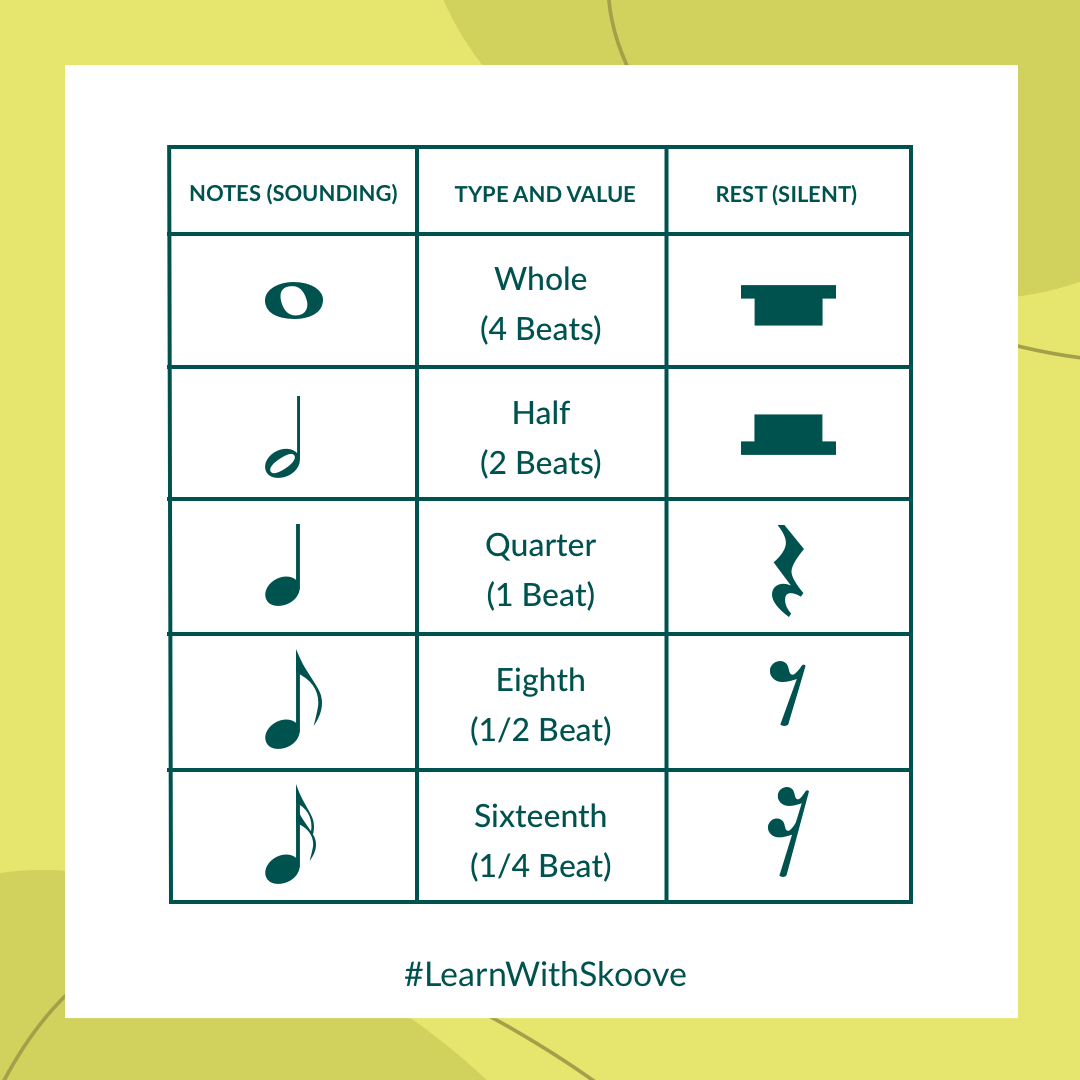A strong rhythm feel is one of the most important skills you can develop as a pianist. Fortunately, there are hundreds of piano rhythm exercises you can use to develop and improve your rhythm. All it takes is a little dedicated and consistent effort and you can build a solid and strong rhythm feel that will heighten your overall enjoyment and confidence in your musical abilities! The strategies in this article are accessible for students of all levels and abilities and once you master the basics, you can expand and develop them into your interesting creations!
- Fall in love with the music - Learn your favorite songs, at a level suitable for you.
- Enjoy interactive piano lessons - Explore courses covering music theory, technique chords & more.
- Get real-time feedback - Skoove's feedback tells you what went well and what needs practice.

Make sure you know the basics
Understanding the basic fundamentals of rhythm is crucial if you want to progress to higher piano rhythm exercises. Understanding the different rhythmic values and how to count through them is extremely helpful. Make sure you understand these basic rhythms and their values. Take a look at this lesson on tempo markings if you need a refresher.

Break out the metronome
When it comes to building a strong piano rhythmic feel, the metronome is an invaluable tool. There are an endless number of ways you can use the metronome in your practice to help develop your rhythm in music. Let’s explore a few ideas here.
Metronome on every beat
The most straightforward piano rhythm exercise is to practice with the metronome on every beat. If you are just beginning to practice with the metronome, try this strategy first. You can use this strategy with any song or technique exercise that you practice or you can try this strategy with some piano improvisation. Practicing all these piano rhythmic strategies with improvisation is a great way to build your creative spontaneity; you hardly have any time to think, you simply have to act and not judge what you play.
Metronome on two beats
Once you feel comfortable with the metronome on all four beats, try cutting the number of beats in half so that the metronome clicks on only two beats. You can accomplish this by reducing the BPM (beats per minute) on the metronome by ½, or if your metronome has a setting to control which beat is sounding, use that.
There are at least two variations on this method. The first with the metronome on beats one and three like this:

The second is with the metronome on beat two and four like this:

Practicing like this will help you internalize the pulse of the music. You will need to learn how to count the beats in your head. You may find it helpful to tap your foot on all four beats when you start practicing this way, but you should try to move away from that and either tap on the beats with the metronome, or feel the beats inside your body.
Metronome on only beat
If you are looking for a real challenge, move to the next level. Here you will practice with the metronome only one beat at a time. Practicing this rhythm in music will make your piano rhythmic feel much stronger in a short period of time because you have much less information coming from the metronome. You will need to feel more of the beats internally.
In a 4/4 time signature, there are at least four variations on this exercise. You can practice this with the metronome only on beat one. If you have not practiced this strategy before, begin here:
 Next, try the metronome on just beat two like this:
Next, try the metronome on just beat two like this:

You can also practice with the metronome on just beat three and just beat four like in the next two examples:


Practice all of these strategies with any song or exercise you are learning or with improvisation. Spending time playing these sorts of metronome games is guaranteed to enhance your rhythmic feel quickly.
More advanced strategies
After you can successfully practice with the metronome and all four beats, just two beats, and just one beat, take a look at some of these more advanced strategies for practicing with the metronome. These strategies are a little more esoteric and require a good deal of concentration, but are well worth your time to practice.
Alternating beats
This strategy involves placing the metronome on a different beat each measure. You can achieve this strategy best with a metronome that has a sequencer function where you can program which beats the metronome will click.
There are many variations on this type of exercise. This variation is in 4/4 time and is four measures long, but you can change the strategy based on the time signature. In the first measure, the metronome is on beat one. In the second measure, the metronome is beat two. In the third measure, the metronome is on beat three. And in the fourth measure, the metronome is on beat four. Check it out notated below:

You can extend this strategy around the cycle of beats as well. For example, start in the first measure on beat two, second measure on beat three, etc. Or start in the first measure on beat three, second measure on beat four, etc. This way, you build your perception of rhythm from all possible angles.
Metronome on off-beats
Practicing with the metronome on off-beats is an advanced strategy to build your rhythmic feel. You can apply this variation to any of the strategies we have learned so far. For example, take the first strategy with the metronome on all four beats and shift the click forward by one eighth note. It will look like this:

If you apply this strategy to the metronome on beats one and three, it will look like this:
Metronome on dotted quarter notes
The final strategy we will learn involves the metronome clicking in a dotted quarter note pattern, also known as a hemiola pattern. This pattern mirrors the 3/2 proportion we touched on at the beginning.
In a 4/4 time signature, this rhythm in music lasts for three measures. But, like all the other strategies, you can experiment with beginning your song or exercise at different points inside the pattern to build your rhythmic strength from more angles.
Once again, this pattern is best achieved if your metronome has a sequencer or you can choose which rhythmic value your metronome clicks. This is what the pattern looks like notated:

Conclusion
Having a strong rhythmic feel on the piano will enhance your enjoyment and increase your confidence in your musical abilities. There are many more strategies beyond the basic metronome tricks we learned in this article. You should expand upon the strategies presented here and try to come up with some of your own to continue building your skills.
Of course, the best way to build your rhythmic skills however is to play music with other people as often as possible. Obviously this has not been the most accessible activity to most people the last year. To help with this, Skoove offers many great lessons on building your rhythmic skills, learning songs, and enhancing your musicianship to help you receive all the benefits of playing piano. Practice up so that when the time comes to get back out there and start jamming, you are ready to rock!
Author of this blog post

Eddie Bond is a multi-instrumentalist performer, composer, and music instructor currently based in Seattle, Washington USA. He has performed extensively in the US, Canada, Argentina, and China, released over 40 albums, and has over a decade experience working with music students of all ages and ability levels.














